- About Albizia lankoranskaya
- Climate suitability for Albizia lankoranskaya
- Temperature
- Precipitation
- Altitude
- Soil Type
- Sunlight
- Benefits of growing Albizia lankoranskaya
- Cultivation tips for Albizia lankoranskaya
- 1. Choosing the right location:
- 2. Planting:
- 3. Watering:
- 4. Pruning:
- 5. Fertilizing:
- Potential uses of Albizia lankoranskaya
- 1. Forestry
- 2. Agroforestry
- 3. Fuelwood and timber
- 4. Animal fodder
- 5. Erosion control
- 6. Medicinal and traditional uses
- 7. Ornamental purposes
- 8. Soil improvement
- 9. Climate change mitigation
- Environmental Impact of Albizia lankoranskaya
- Biodiversity Support
- Erosion Control
- Air Quality Improvement
- Non-Invasive Nature
- Sustainable Resource
- Questions and Answers:
- What is Albizia lankoranskaya?
- What are the characteristics of Albizia lankoranskaya?
- Why is Albizia lankoranskaya considered a pioneer species?
- What are the benefits of planting Albizia lankoranskaya?
- Can Albizia lankoranskaya survive in different climates?
- How can Albizia lankoranskaya be propagated?
- Is Albizia lankoranskaya invasive?
- Videos: Albizia Trees – How we manage them using PERMACULTURE techniques
The Albizia lankoranskaya is a remarkable tree that has proven to be highly adaptable to various climate conditions. Native to the tropical regions of Asia, this tree has recently gained popularity in our area due to its ability to thrive in our climate.
One of the key features of Albizia lankoranskaya is its resilience to extreme weather conditions. Whether it’s intense heat, heavy rains, or even frost, this tree has shown an incredible ability to withstand and adapt to these challenges. This makes it an ideal choice for landscaping projects, as it can be planted in a variety of locations and still thrive.
In addition to its adaptability, Albizia lankoranskaya is also known for its stunning beauty. The tree features lush foliage, with delicate, fern-like leaves that create a graceful canopy. Its flowers are a sight to behold as well, with clusters of pink or white blossoms that bloom throughout the year. Not only does this tree provide visual appeal, but it also attracts pollinators such as bees and butterflies, contributing to a healthy ecosystem.
Another unique characteristic of Albizia lankoranskaya is its ability to fix nitrogen in the soil. This means that it can enrich the soil with essential nutrients, reducing the need for synthetic fertilizers. This is a significant benefit, as it promotes sustainable gardening practices and helps to maintain the health of the surrounding environment.
In conclusion, Albizia lankoranskaya is a pioneering tree that not only survives but thrives in our climate. Its adaptability, beauty, and environmental benefits make it an excellent choice for landscaping projects and contribute to the overall sustainability of our region.
About Albizia lankoranskaya
Albizia lankoranskaya, commonly known as lankoranskaya silk tree, is a pioneering tree species that thrives in our climate. It is native to the forests of Lankaran region in Azerbaijan. With its beautiful flowers and fast growth, it has become a popular choice for gardening and urban landscaping projects.
Appearance:
Albizia lankoranskaya is a deciduous tree that can reach a height of up to 15 meters. Its crown is wide and spreading, providing ample shade. The bark of the tree is smooth and grayish-brown in color.
The leaves of Albizia lankoranskaya are large and bipinnate, meaning they have small leaflets arranged on either side of a central stalk. These leaflets are green and feathery, creating a delicate and refreshing appearance. In autumn, the leaves turn a vibrant yellow color before falling.
Flowers:
One of the most striking features of Albizia lankoranskaya is its flowers. They are produced in abundance and are arranged in clusters at the end of branches. Each flower is fluffy and pink in color, resembling a ball of silk. The flowers bloom from June to September, adding a touch of color to the landscape.
Growth and Adaptability:
Albizia lankoranskaya is known for its fast growth rate, making it an ideal choice for establishing green areas quickly. It can adapt to a wide range of soil types, including sandy and loamy soils. The tree also tolerates both sunny and partially shaded locations, making it versatile for different planting situations.
Uses:
Due to its graceful appearance and shade-providing capabilities, Albizia lankoranskaya is often planted in parks, gardens, and along streets. The tree’s flowers attract bees and butterflies, making it appealing to pollinators. Additionally, the wood of Albizia lankoranskaya is used for making furniture and handicrafts.
Cultivation:
Albizia lankoranskaya is easy to cultivate and requires minimal maintenance once established. It can be propagated from seeds or cuttings. When planting the tree, it is important to choose a well-drained location and provide regular watering during the initial stages of growth.
Conclusion:
Albizia lankoranskaya is a remarkable tree species that thrives in our climate. Its beautiful flowers, fast growth, and adaptability make it a popular choice for landscaping projects. Whether it’s creating green spaces or attracting pollinators, Albizia lankoranskaya adds beauty and functionality to any environment.
Climate suitability for Albizia lankoranskaya
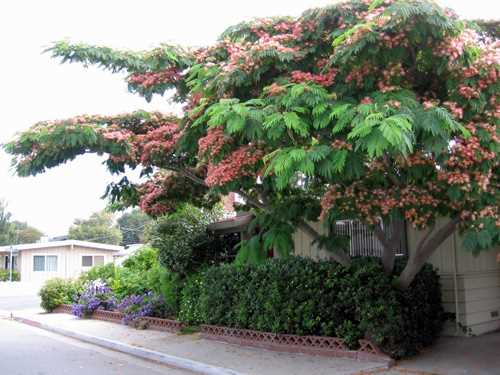
Albizia lankoranskaya is a tree species that has shown great resilience and adaptability to various climates. It can thrive in a wide range of climatic conditions, making it suitable for cultivation in different parts of the world.
Temperature
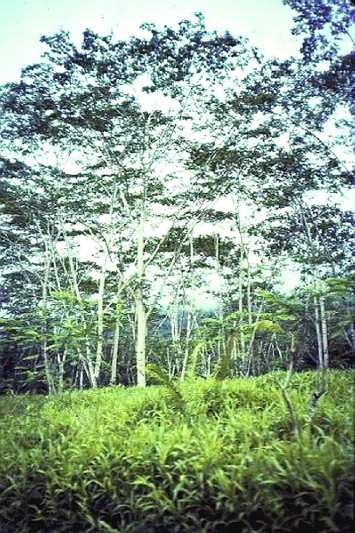
Albizia lankoranskaya can tolerate a wide range of temperatures, from hot and tropical to mild and temperate. It can withstand temperatures as high as 40°C (104°F) and as low as -5°C (23°F). However, it is important to note that the tree may experience some damage or reduced growth in extreme temperature conditions.
Precipitation
Albizia lankoranskaya is a relatively drought-tolerant tree species, although it prefers moderate to high levels of rainfall. It can survive in areas with an annual precipitation range of 500-2000 mm (20-80 inches). However, it is important to ensure proper drainage to avoid waterlogging, which can be detrimental to the tree’s growth.
Altitude
The tree species has been successfully cultivated at various altitudes. It can grow at sea level as well as at higher elevations, up to 2000 meters (6500 feet) above sea level. However, it may experience slower growth or reduced hardiness at higher altitudes.
Soil Type
Albizia lankoranskaya can grow in a variety of soil types, including loamy, sandy, and clayey soils. It prefers well-drained soils with a pH range of 5.5-7.5. The tree can tolerate moderately acidic to slightly alkaline soil conditions.
Sunlight
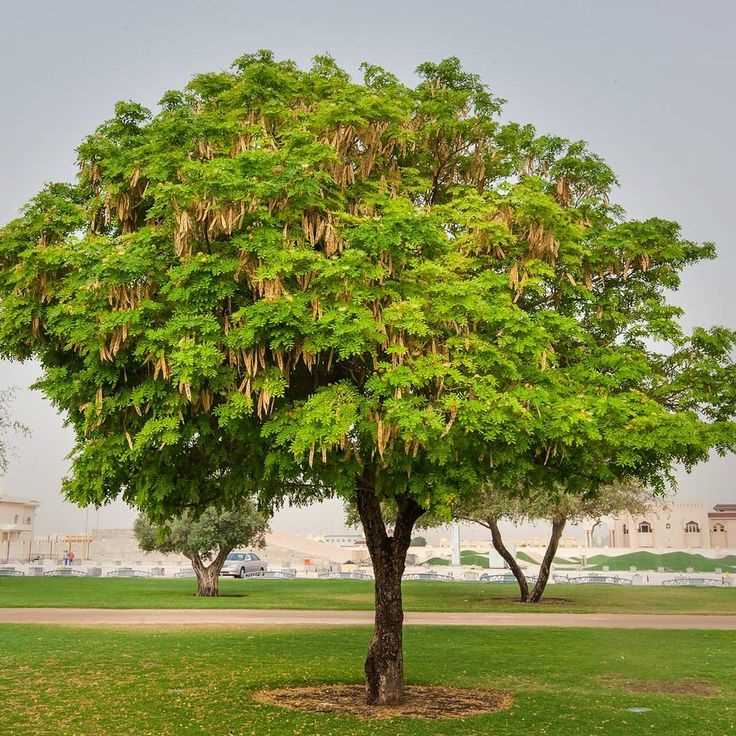
Albizia lankoranskaya is a sun-loving tree species that requires full sunlight for optimal growth. It can tolerate partial shade, but prolonged shade may hinder its growth and flowering capabilities.
Overall, Albizia lankoranskaya is a versatile tree species that can adapt to a wide range of climatic conditions. Its resilience and adaptability make it a suitable choice for cultivation in different regions around the world.
Benefits of growing Albizia lankoranskaya
The Albizia lankoranskaya tree has numerous benefits that make it an ideal choice for gardeners and landscapers:
- Fast growth: Albizia lankoranskaya is known for its rapid growth rate, making it an excellent choice for those looking to establish a lush garden or landscape in a short amount of time.
- Drought tolerance: This tree is highly drought-tolerant, making it an ideal choice for regions with limited water availability. Once established, Albizia lankoranskaya requires minimal watering.
- Shade provision: The dense canopy of Albizia lankoranskaya provides ample shade, making it an excellent choice for areas that require relief from the sun, such as outdoor seating areas or pathways.
- Soil improvement: Albizia lankoranskaya has the unique ability to fix nitrogen in the soil, improving its fertility. This makes it a valuable tree for permaculture and regenerative agriculture practices.
- Wildlife attraction: The vibrant flowers of Albizia lankoranskaya attract bees, butterflies, and other pollinators, contributing to biodiversity and supporting the local ecosystem.
- Low maintenance: Once established, Albizia lankoranskaya requires minimal maintenance, making it an ideal choice for those who prefer low-maintenance landscaping options.
In addition to these benefits, the Albizia lankoranskaya tree is also resistant to many common pests and diseases, making it a hardy and reliable choice for any garden or landscape.
Cultivation tips for Albizia lankoranskaya
Albizia lankoranskaya, also known as the Lankoranskaya Silk Tree, is a pioneering tree that thrives in our climate. Here are some cultivation tips to help you successfully grow this beautiful tree in your garden:
1. Choosing the right location:
- Albizia lankoranskaya thrives in full sun to partial shade conditions, so choose a location that receives at least 6 hours of direct sunlight per day.
- Make sure the soil is well-drained and fertile. If your soil is heavy clay or compacted, consider improving it by adding organic matter.
2. Planting:
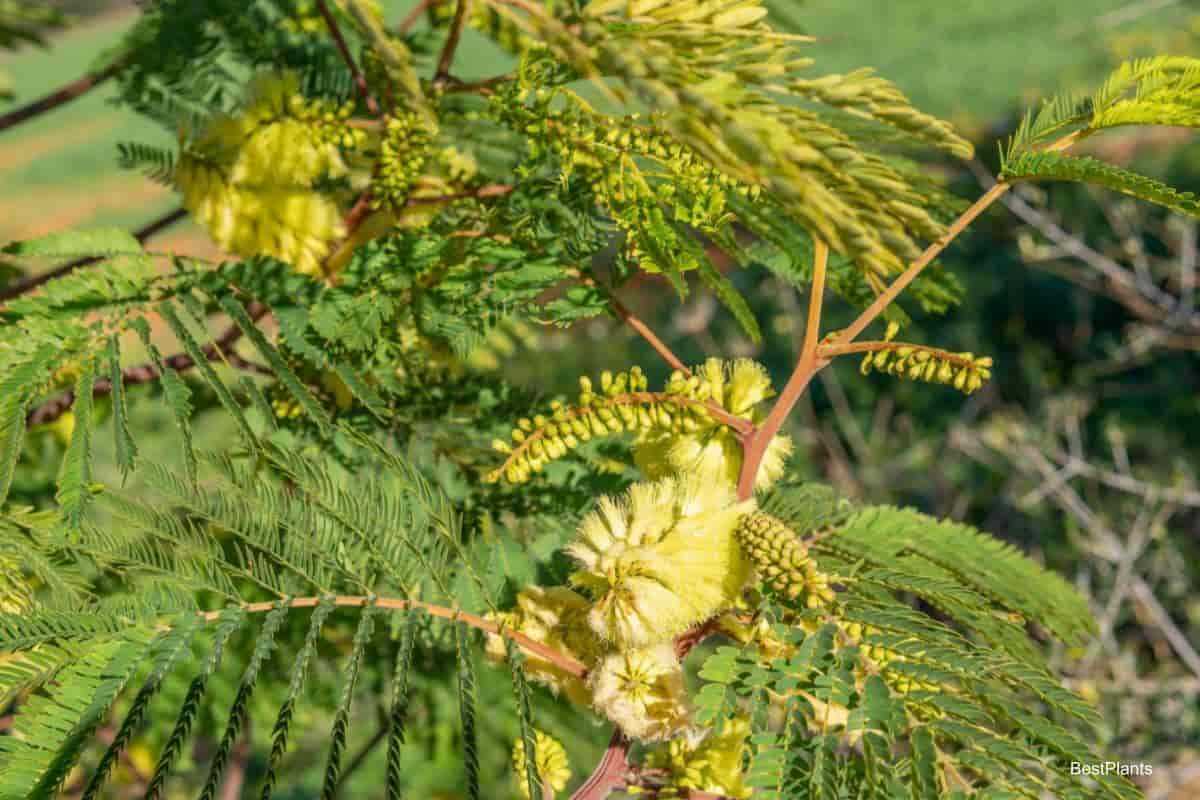
- Plant Albizia lankoranskaya in early spring or fall when the soil is moist, but not waterlogged.
- Dig a hole that is about twice the size of the plant’s root ball. Place the tree in the hole, making sure the top of the root ball is level with or slightly above the soil surface.
- Backfill the hole with soil, gently firming it around the roots. Water thoroughly to settle the soil.
3. Watering:
- Keep the soil consistently moist during the first year of growth. Water deeply and regularly, especially during dry periods.
- Once established, Albizia lankoranskaya is moderately drought-tolerant, but it’s still important to water during prolonged dry spells.
4. Pruning:
- Prune Albizia lankoranskaya in late winter or early spring to remove any dead, damaged, or crossing branches.
- You can also shape the tree by selectively removing branches to create a desired form.
- Be careful not to remove too much foliage, as Albizia lankoranskaya blooms on new growth.
5. Fertilizing:
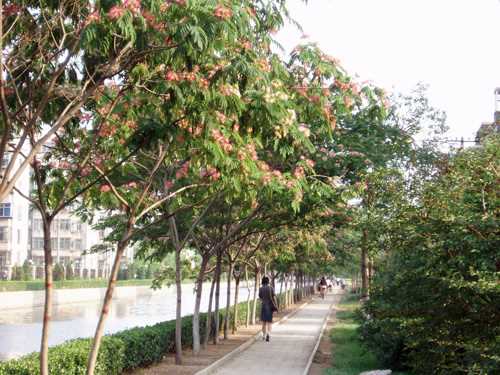
- Feed Albizia lankoranskaya with a balanced fertilizer in early spring, just before new growth begins.
- Follow the package instructions for application rates. Avoid over-fertilizing, as it can lead to excessive vegetative growth and reduced flowering.
- Organic fertilizers, such as compost or well-rotted manure, can also be applied around the base of the tree to improve soil fertility.
By following these cultivation tips, you can enjoy the beauty of Albizia lankoranskaya in your garden and contribute to the conservation of this pioneering tree species.
Potential uses of Albizia lankoranskaya
Albizia lankoranskaya, also known as the Lankaran Albizia, is a pioneering tree species that shows great potential for various uses. Its adaptability to our climate, fast growth rate, and environmental benefits make it an attractive option for a range of applications.
1. Forestry
Albizia lankoranskaya can be used in forestry practices to restore degraded forests, as it has the ability to thrive in a wide range of soil and climatic conditions. It can help improve soil structure and fertility, provide shade for other vulnerable plant species, and enhance biodiversity in degraded areas.
2. Agroforestry
The tree’s ability to fix nitrogen in the soil makes it ideal for agroforestry systems. Albizia lankoranskaya can be intercropped with agricultural crops to enhance soil fertility and increase crop yields. Its dense foliage can also provide shade and wind protection for delicate crops.
3. Fuelwood and timber
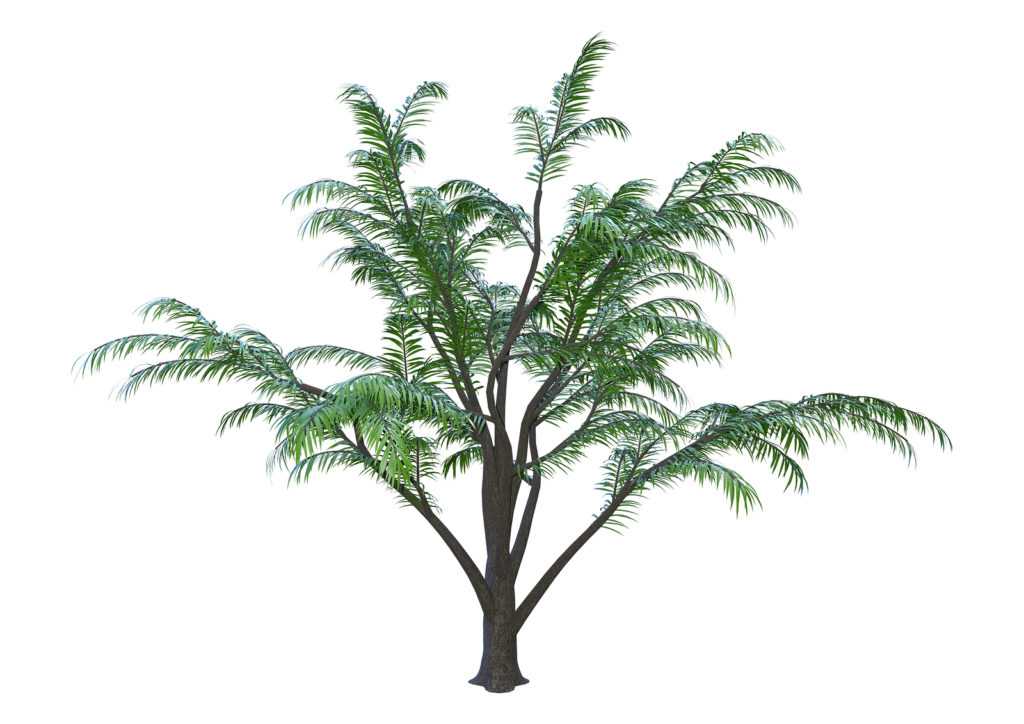
Albizia lankoranskaya can be grown as a source of fuelwood and timber. Its fast growth rate allows for regular harvesting, providing a sustainable source of energy and building material. The wood is light and easy to work with, making it suitable for various construction and woodworking purposes.
4. Animal fodder
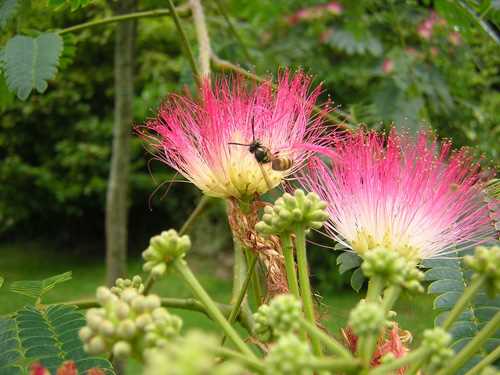
The leaves and pods of Albizia lankoranskaya are highly nutritious and can be used as animal fodder. Livestock, such as cattle and goats, can benefit from the tree’s high protein content and palatability. Additionally, the tree’s ability to fix nitrogen can enhance forage quality in pastures.
5. Erosion control
Due to its deep root system and dense foliage, Albizia lankoranskaya is effective in controlling erosion. It can be planted along riverbanks, hillsides, and other vulnerable areas to stabilize soil, prevent landslides, and reduce water runoff.
6. Medicinal and traditional uses
Albizia lankoranskaya has traditional uses in herbal medicine. Its bark and leaves have been used to treat various ailments, including digestive disorders, respiratory problems, and skin conditions. Further research is needed to explore its potential medicinal properties and develop pharmaceutical applications.
7. Ornamental purposes
The attractive flowers and feathery foliage of Albizia lankoranskaya make it a popular choice for ornamental purposes. It can be planted in gardens, parks, and along roadsides to provide shade, beautify landscapes, and attract pollinators.
8. Soil improvement
Albizia lankoranskaya has the ability to improve soil fertility through nitrogen fixation and organic matter accumulation. Its fallen leaves and branches can contribute to nutrient cycling and soil moisture retention, making it beneficial for soil rehabilitation and sustainable land management practices.
9. Climate change mitigation
The fast growth rate and ability of Albizia lankoranskaya to sequester carbon make it valuable in climate change mitigation efforts. Planting this tree species on a large scale can help offset greenhouse gas emissions and enhance carbon storage in the long term.
| Use | Benefits |
|---|---|
| Forestry | Soil improvement, biodiversity enhancement |
| Agroforestry | Enhanced soil fertility, increased crop yields |
| Fuelwood and timber | Sustainable energy and building material source |
| Animal fodder | Nutritious feed for livestock |
| Erosion control | Soil stabilization, landslide prevention |
| Medicinal and traditional uses | Potential for herbal medicine |
| Ornamental purposes | Shade, beautification, pollinator attraction |
| Soil improvement | Fertility enhancement, nutrient cycling |
| Climate change mitigation | Carbon sequestration, offsetting emissions |
Environmental Impact of Albizia lankoranskaya
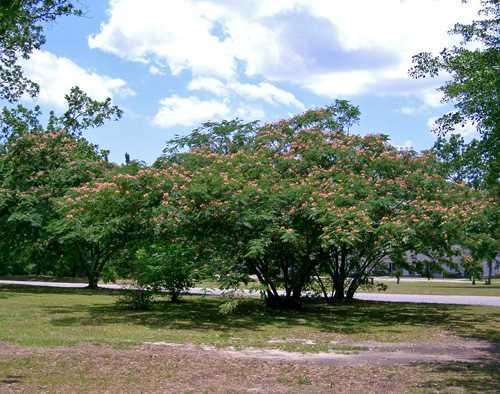
The introduction of Albizia lankoranskaya to our climate has had a significant environmental impact. This pioneering tree has proven to be remarkably resilient and adaptable, which has allowed it to thrive in various conditions and ecosystems.
Biodiversity Support
Albizia lankoranskaya has the ability to quickly establish itself and provide shade and shelter for other plant species. Its dense canopy and wide-spreading branches create a microhabitat that supports a diverse range of flora and fauna.
This tree also attracts pollinators, such as butterflies and bees, due to its abundant flowers. The presence of these pollinators further enhances biodiversity by aiding in the reproduction of other plant species.
Erosion Control
One of the most significant environmental benefits of Albizia lankoranskaya is its ability to control erosion. The tree’s extensive root system helps stabilize the soil, preventing erosion caused by heavy rains or wind.
By reducing soil erosion, Albizia lankoranskaya plays a crucial role in maintaining the health of ecosystems. It helps retain nutrients in the soil and prevents sedimentation in nearby water bodies, which is essential for the overall balance of the environment.
Air Quality Improvement
Albizia lankoranskaya is known for its ability to absorb large amounts of carbon dioxide and release oxygen during photosynthesis. By doing so, it contributes to improving air quality and mitigating the effects of climate change.
The presence of Albizia lankoranskaya in urban areas can help reduce the levels of pollutants and particulate matter in the air, creating a healthier environment for both humans and other living organisms.
Non-Invasive Nature
Unlike some other introduced tree species, Albizia lankoranskaya is not considered invasive. It does not aggressively outcompete native plant species or disrupt the natural balance of ecosystems.
This non-invasive nature of Albizia lankoranskaya makes it a suitable choice for reforestation projects and ecological restoration efforts. It can be integrated into existing ecosystems without causing harm or imbalance.
Sustainable Resource
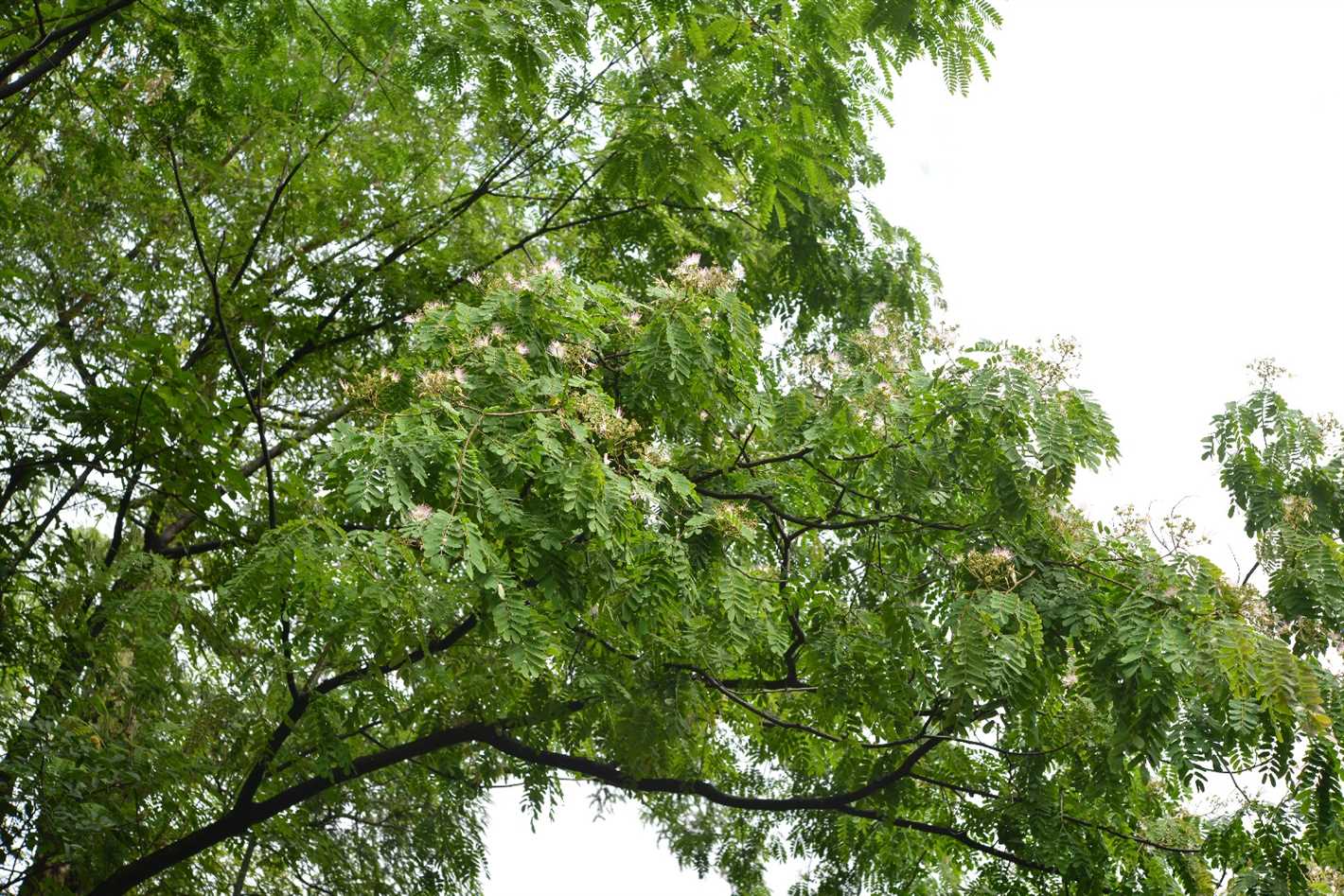
Albizia lankoranskaya also has practical benefits as a sustainable resource. Its wood is lightweight, durable, and resistant to various pests and diseases. This makes it a valuable material for construction and furniture making.
By promoting the cultivation and use of Albizia lankoranskaya, we can reduce our dependence on less sustainable resources and contribute to a more environmentally friendly economy.
Questions and Answers:
What is Albizia lankoranskaya?
Albizia lankoranskaya is a type of tree that is well adapted to our climate. It is a pioneer species, meaning it is one of the first to colonize barren or disturbed land.
What are the characteristics of Albizia lankoranskaya?
Albizia lankoranskaya is a fast-growing tree that can reach heights of up to 25 meters. It has beautiful feather-like foliage and produces pink flowers in the summer.
Why is Albizia lankoranskaya considered a pioneer species?
Albizia lankoranskaya is considered a pioneer species because it can thrive in harsh conditions and quickly establish itself in barren or disturbed areas. It has the ability to fix nitrogen in the soil, making it valuable for soil improvement and ecosystem restoration.
What are the benefits of planting Albizia lankoranskaya?
Planting Albizia lankoranskaya can have several benefits. It can help prevent soil erosion, improve soil fertility, and provide shade and habitat for other species. Additionally, its pink flowers add beauty to the landscape.
Can Albizia lankoranskaya survive in different climates?
Albizia lankoranskaya is well adapted to our climate, but it may not thrive in other climates. It is best suited for warm, tropical or subtropical regions with well-drained soil.
How can Albizia lankoranskaya be propagated?
Albizia lankoranskaya can be propagated through seeds or cuttings. Seeds can be collected from mature trees and sown directly in the soil, while cuttings can be taken from young branches and rooted in a suitable growing medium.
Is Albizia lankoranskaya invasive?
Albizia lankoranskaya has the potential to become invasive in certain regions. Its fast growth and ability to produce a large number of seeds can result in it outcompeting native plant species. It is important to carefully consider its potential impact before planting it in a new area.







